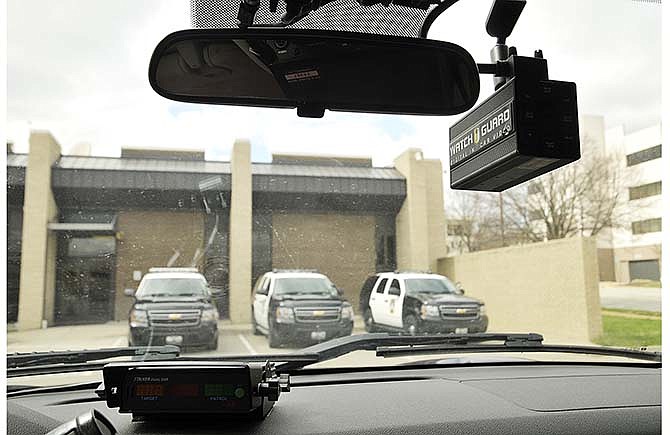The Jefferson City Council will soon be asked to approve a police department request to purchase new in-car cameras since the department has no operational cameras left.
The council's Public Safety Committee approved a request from Police Chief Roger Schroeder for $85,000 to be transferred from the police drug forfeiture accounts to pay for 27 cameras. The department previously had 25 cameras.
"They reached the end of their lifespan," he said. "The department has utilized in-car cameras since 2005. Cameras are sensitive electronic equipment which function in an environment that is not favorable to electronics. The cameras have become inoperable over a period of several years."
Schroeder said they initially were fixing cameras as they malfunctioned, but it became very expensive.
"To replace cameras as they broke would have resulted with a mix of different camera systems," he said. "That would have been operationally unwise and fiscally inefficient. We anticipated the need to replace the cameras, and the associated costs were included in the police field equipment component of the last city half-cent sales tax expenditure plan. Lack of immediate funding availability and the need for other items with a higher priority resulted in the decision to seek approval for the cameras now."
The total cost of the in-car camera system is roughly $175,000.
Schroeder said the in-car cameras serve as an important addition to the "escalating list" of electronic technology available to law enforcement agencies.
"The cameras serve to improve our in-service training efforts," he said. "The actual events can be shown to officers to illustrate the effective method of achieving a desired end and sometimes the not so effective. The in-car camera also promotes transparency of operations. Police/citizen interactions are less inclined to digress when all parties are aware of the camera. Prosecutors sometimes use the video in various court proceedings. After viewing the video, the judicial process is many times accelerated. Finally, the video from in-car cameras become evidence in our internal personnel investigations."
Schroeder added: "Are the cameras a critical piece of law enforcement service, without which the community would be endangered? No. Do the cameras enhance our ability to provide fair, cordial, transparent and effective service? Absolutely."
After weighing the cost versus benefit of placing cameras in other fleet vehicles, Schroeder said it was determined the department would not place cameras in unmarked vehicles, on motorcycles, in community service unit vehicles or in tactical vehicles.
"In a perfect world with unlimited resources, cameras may be deemed appropriate for all police vehicles," he said. "There are no legal requirements with regard to a camera mandate. Courts have long held that law enforcement agencies have wide discretion in the manner of equipping their officers. The courts have acknowledged budgetary constraints of local units of government. Liability springs from the conduct of individual officers, not from the level of technology employed by the respective agencies."

